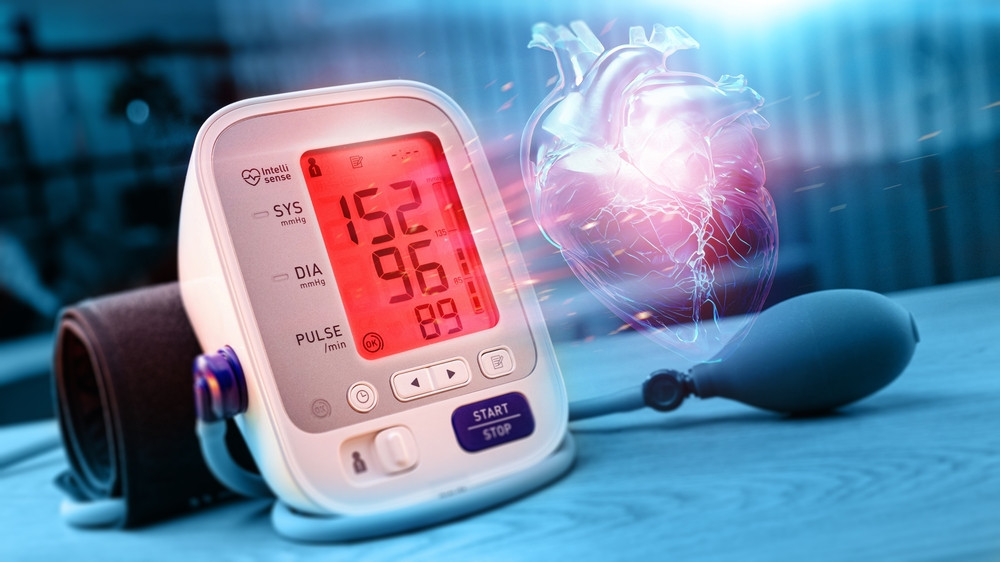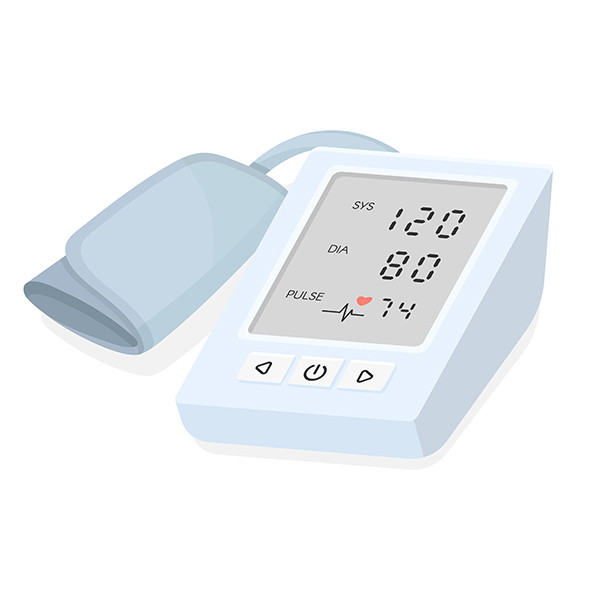What Is The Ideal Blood Pressure and Hypertension?

Blood pressure serves as a vital marker for assessing the functionality of our cardiovascular system. It not only reflects our overall health but also serves as a potential indicator of underlying health conditions. Startling statistics reveal that approximately one in every three individuals aged 15 and above in Hong Kong is affected by high blood pressure
What is blood pressure?
Blood pressure is the force exerted by the blood against the walls of the arteries. It is expressed with two numbers, such as 120/80 millimetres of mercury (mmHg). The first number (systolic pressure/upper number) represents the pressure exerted on the artery walls when the heart contracts, while the second number (diastolic pressure/lower number) represents the pressure when the heart is at rest between beats. Normal blood pressure should fall within a specific range.

Standard range of blood pressure
Blood pressure can vary throughout the day due to different factors, such as body posture, physical activity, emotions, and sleep. For adults, hypertension is typically diagnosed when the systolic pressure (upper number) consistently measures 140mmHg or higher or diastolic pressure (lower number) consistently measures 90mmHg or higher. Blood pressure readings between 120-130mmHg (systolic) and 80-89mmHg (diastolic) are classified as prehypertension, requiring close attention.
In the case of children or adolescents, high blood pressure is determined when repeated measurements of systolic or diastolic pressure are equal to or exceed the 95th percentile for individuals of the same age, height, and gender.
The World Health Organization (WHO) provides guidelines for defining the standard blood pressure ranges in adults:
| Systolic pressure | Diastolic pressure | |
| Normal Blood Pressure | 90-120 mmHg | 60-80 mmHg |
| Prehypertension | 121-139 mmHg | 81-89 mmHg |
| Hypertension | ≥140 mmHg | ≥90 mmHg |
| Hypotension | <90 mmHg | <60 mmHg |
What health problems can hypertension cause?
High blood pressure, if left uncontrolled, can pose a threat to health as it is a chronic condition. It can lead to the following health problems:
Heart disease
Hypertension is one of the primary risk factors for heart disease. Prolonged high blood pressure can lead to issues such as cardiac hypertrophy, coronary heart disease、heart failure, and arrhythmias. Research indicates that individuals with hypertension are 4 times more likely to develop coronary artery disease compared to those with normal blood pressure. Long-term hypertension increases the burden on the heart and blood vessels, accelerates the progression of atherosclerosis, and can ultimately result in coronary artery disease.
Read more: Patients with hypertension are at a high risk of developing coronary artery disease
Stroke
Elevated blood pressure can exert excessive pressure on the arterial walls, leading to damage and the development of atherosclerosis, increasing the risk of blood clot formation and plaque buildup. When a blood clot or plaque obstructs a cerebral blood vessel, it can cause a stroke. Furthermore, high blood pressure can weaken blood vessels, making them more prone to rupture, resulting in a hemorrhagic stroke. Additionally, high blood pressure can impact the small blood vessels in the brain, leading to inadequate blood supply to brain tissues.
Kidney disease
High blood pressure increases the pressure on the glomeruli and renal blood vessels, leading to impaired kidney function and inadequate blood flow to the kidneys. If left uncontrolled, it can result in chronic kidney disease and kidney failure.
Vascular disease
High blood pressure exerts pressure on the blood vessel walls, making them fragile and prone to damage, thereby increasing the risk of developing aneurysms and peripheral artery disease.
Read more: Lower Extremity Arterial Disease Screening Programme
Eye problems
Prolonged high blood pressure can lead to vascular changes in the eyes, resulting in vision problems or even blindness.
Cognitive impairment
High blood pressure is associated with an increased risk of cognitive impairment, with the most common being Alzheimer’s disease.
Read more: Cognitive Health Assessment Programme
How is hypertension diagnosed?
High blood pressure can be diagnosed through blood pressure measurements at home or a medical clinic using a blood pressure monitor. In addition, the doctor will inquire about your medical history and may arrange further tests to evaluate the underlying causes and potential complications of high blood pressure. These additional tests may include blood and urine tests, electrocardiogram (ECG), or chest X-ray, among others.
Classification of causes of hypertension
Hypertension can be classified into two main categories: primary (essential) and secondary hypertension. The majority of hypertensive patients belong to the primary category, where there is no clear or specific cause. Still, it may be associated with various factors, including genetics, lifestyle, dietary habits, obesity, lack of exercise, stress, or age. Secondary hypertension, on the other hand, is primarily caused by other diseases or physiological changes, such as kidney disease, endocrine disorders (such as thyroid disease and adrenal tumours), hormone use (such as oral contraceptives), certain medications (such as steroids, non-steroidal anti-inflammatory drugs), and complications during pregnancy, among others.
What are the symptoms of hypertension
Individuals with high blood pressure generally do not exhibit noticeable symptoms in the early stages. It is often detected during routine physical examinations or when complications arise.
Treatment for hypertension
Hypertension is a chronic condition that requires long-term treatment and management with the goal of reducing blood pressure levels and minimising the risk of vascular complications. The treatment approach for hypertension depends on an individual's circumstances and blood pressure levels. Common treatment methods include:
Lifestyle modifications
This involves reducing sodium intake, increasing the consumption of vegetables, fruits and whole grains; limiting alcohol consumption and quitting smoking; Performing moderate aerobic exercise such as walking, running, and swimming; and implementing stress management and adequate rest.
Medication treatment
Commonly used medications for treating hypertension include:
- Diuretics (water pills): Help reduce excess fluid and sodium in the body, thereby lowering blood pressure.
- Calcium channel blockers: Help relax blood vessels, causing them to widen and lower blood pressure.
- Beta-blockers: Help slow heart rate, reduce cardiac workload, and lower blood pressure.
- Alpha-blockers: Help relax blood vessels, improving blood flow and lowering blood pressure.
- Angiotensin-converting enzyme inhibitors (ACE inhibitors) and angiotensin receptor blockers (ARBs): Inhibit the activity of angiotensin, leading to vasodilation and lowered blood pressure.
Medication treatment should be undertaken under the guidance of a doctor, and patients should undergo regular medical check-ups to monitor their blood pressure and make necessary adjustments to the treatment plan. With consistent effort and a healthy lifestyle, most individuals can effectively manage hypertension and reduce the risk of complications. It is important to note that medication should not be discontinued once blood pressure returns to normal, as hypertension is a chronic condition that requires ongoing management. While medication can help control the condition, it cannot cure it. Therefore, patients must adhere to their doctor's instructions and avoid discontinuing medication without proper guidance.
Read more: Stopping medication without proper guidance increases stroke risk in hypertensive patients
Our Team
Virtus Medical Cardiology Specialists
More:
-
Specialty Services - Cardiology
-
Health Check - Chronic Disease Management Wellness Package
-
Health information - DASH diet helps combat hypertension Hypertension is a warning singal! Early treatment yields high efficacy in polycystic kidney disease